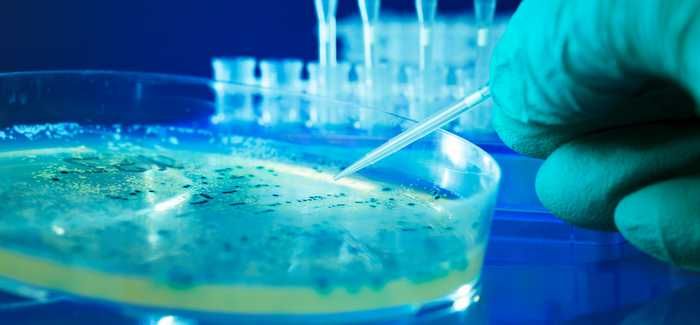To complete an interesting year in microbiology, here are some of the most interesting microbiology news stories of the year.
#1 Processed foods alter gut bacteria, trigger inflammatory disease
The composition of bacteria in the human gut shapes whether a person is more prone towards obesity. In turn, this gut composition can be affected by diet with processed foods presenting some modern day challenges.
This was the argument of Professor Andrew Gewirtz, from the Centre for Inflammation, Immunity and Infection, based at Georgia State University. Professor Gewirtz put forth this argument during a lecture delivered to the Parenteral Drug Association (PDA)'s 10th Global Pharmaceutical Microbiology Conference in Bethesda, U.S., on October 20.
Read more: http://www.digitaljournal.com/life/health/you-are-what-you-eat-processed-foods-and-diabetes-link/article/447318#ixzz3sswQQLGn
The U.K. Government is to work alongside the medical charity the Wellcome Trust, the Bill and Melinda Gates Foundation, the Institut Pasteur International Network, and other global organisations to tackle drug-resistant infections. The new body is to be called the "Fleming Fund."
3# Rapid tuberculosis test in development
In a new study, scientists have described the accuracy of three new rapid tests designed to detect drug-resistant forms of tuberculosis.
With the recent series of experiments, scientists based at the University of California, San Diego School of Medicine, collected sputum samples from 1,128 study participants. Each of the samples was examined using the three different tests. Two of the tests used advanced molecular techniques. These methods looked for genetic mutations in the bacterium’s DNA that confer resistance to antibiotics.
Read more: http://www.digitaljournal.com/science/rapid-tuberculosis-test-in-development/article/445803#ixzz3ssxTN29B
#4 New type of bacteria-powered energy source
As part of the hunt for new types of energy, especially those that are renewable, microbiologists have been examining the properties of marine bacteria. One species, called Cyanothece 51142, is of particular interest.
Blue-green algae (which are not "true" algae but are cyanobacteria) are ubiquitous. They are found in most parts of the world, widespread especially in freshwater, marine, and terrestrial ecosystems. The bacteria have a number of interesting properties — one is to use the energy from that captured light, through the process of photosynthesis, to produce hydrogen.
Read more: http://www.digitaljournal.com/science/blue-green-algae-herald-new-energy-revolution/article/449465#ixzz3ssxjHzsK
#5 New class of bacteria busting antimicrobials
A new type of spiral polypeptides, produced at the University of Illinois, may signal a new type of antimicrobial. The polypeptides target the outer membrane of the bacterial cell wall.
Polypeptides are short protein chains and the attack bacteria by perforating the bacterial membrane. This process of "hole punching" happens multiple times, until the bacterial cell breaks up. The technical term is "membrane disruption." The activity can be confirmed using such techniques as neutron and X-ray diffraction, and fluorescent dyes.
Read more: http://www.digitaljournal.com/science/new-class-of-bacteria-busting-antimicrobials/article/448163#ixzz3ssxxpgxU
#1 Processed foods alter gut bacteria, trigger inflammatory disease
The composition of bacteria in the human gut shapes whether a person is more prone towards obesity. In turn, this gut composition can be affected by diet with processed foods presenting some modern day challenges.
This was the argument of Professor Andrew Gewirtz, from the Centre for Inflammation, Immunity and Infection, based at Georgia State University. Professor Gewirtz put forth this argument during a lecture delivered to the Parenteral Drug Association (PDA)'s 10th Global Pharmaceutical Microbiology Conference in Bethesda, U.S., on October 20.
Read more: http://www.digitaljournal.com/life/health/you-are-what-you-eat-processed-foods-and-diabetes-link/article/447318#ixzz3sswQQLGn
#2 Fund launched to fight global resistant infections
A new global campaign has been launched called the Fleming Fund, with the aim of harnessing resources to tackle the growing problem of antibiotic resistant pathogenic bacteria.
In a new study, scientists have described the accuracy of three new rapid tests designed to detect drug-resistant forms of tuberculosis.
Read more: http://www.digitaljournal.com/science/rapid-tuberculosis-test-in-development/article/445803#ixzz3ssxTN29B
As part of the hunt for new types of energy, especially those that are renewable, microbiologists have been examining the properties of marine bacteria. One species, called Cyanothece 51142, is of particular interest.
Read more: http://www.digitaljournal.com/science/blue-green-algae-herald-new-energy-revolution/article/449465#ixzz3ssxjHzsK
#5 New class of bacteria busting antimicrobials
A new type of spiral polypeptides, produced at the University of Illinois, may signal a new type of antimicrobial. The polypeptides target the outer membrane of the bacterial cell wall.
Read more: http://www.digitaljournal.com/science/new-class-of-bacteria-busting-antimicrobials/article/448163#ixzz3ssxxpgxU








